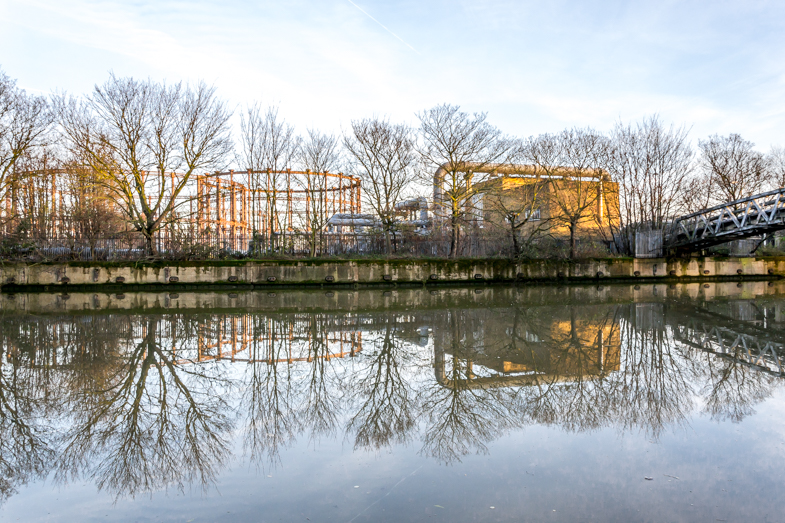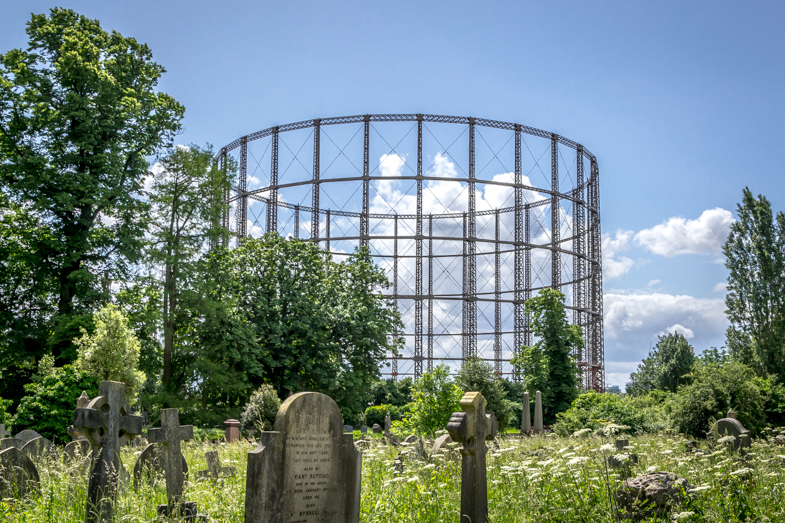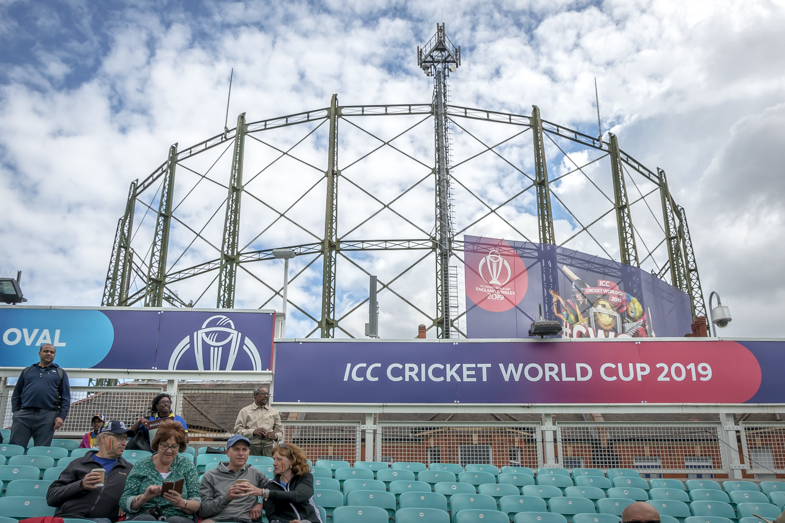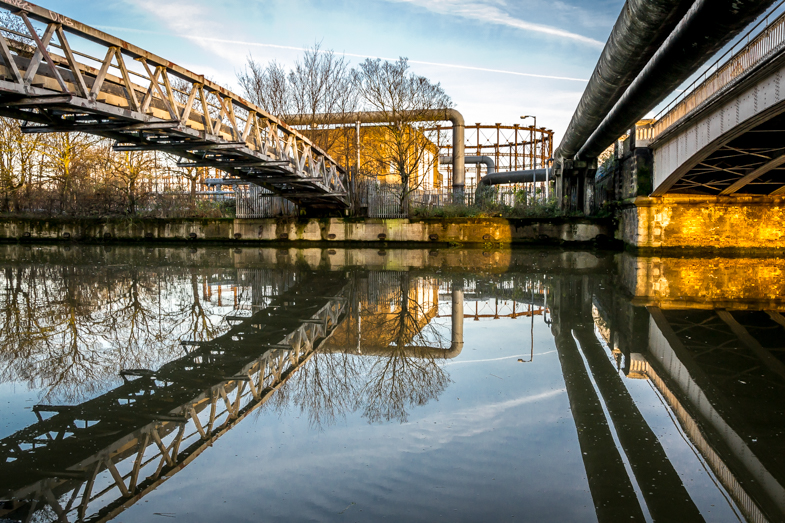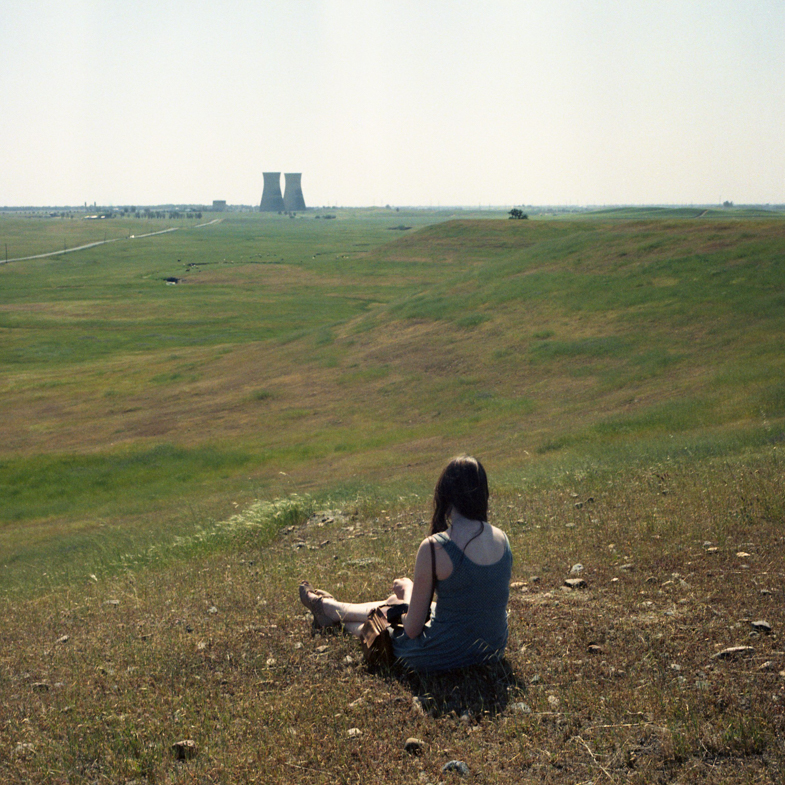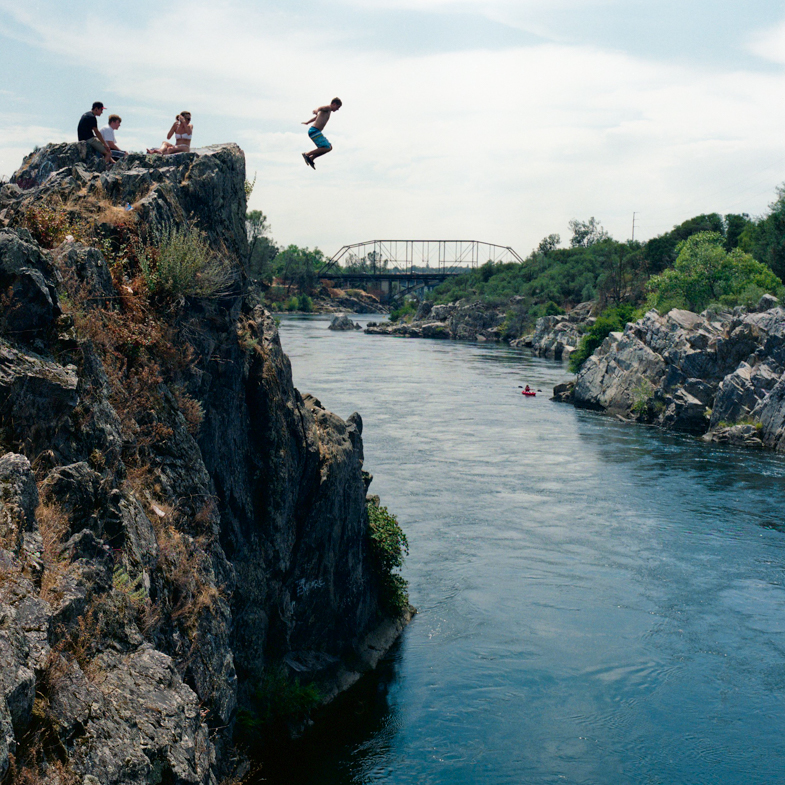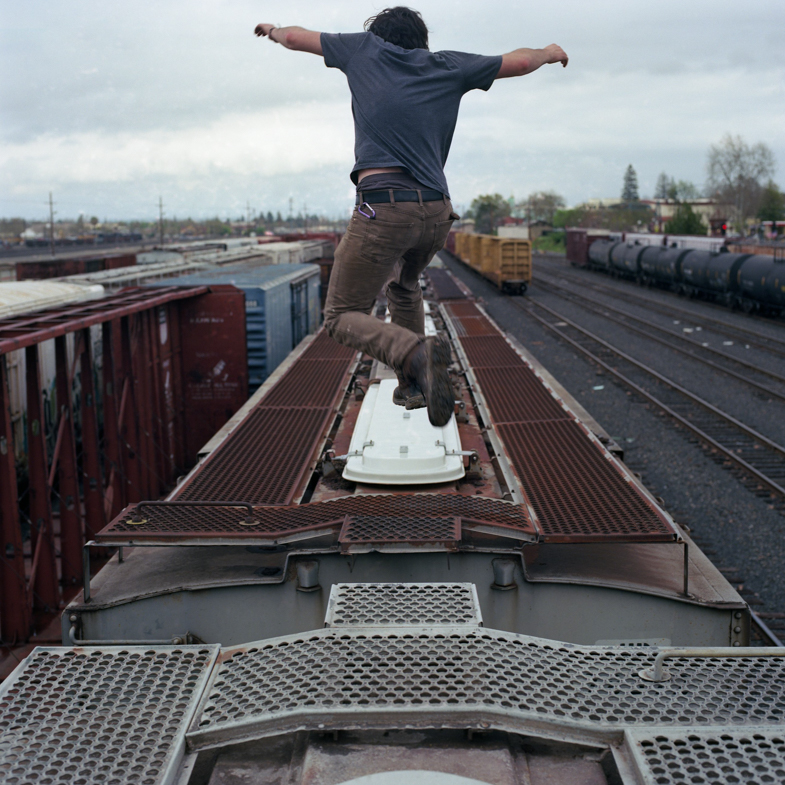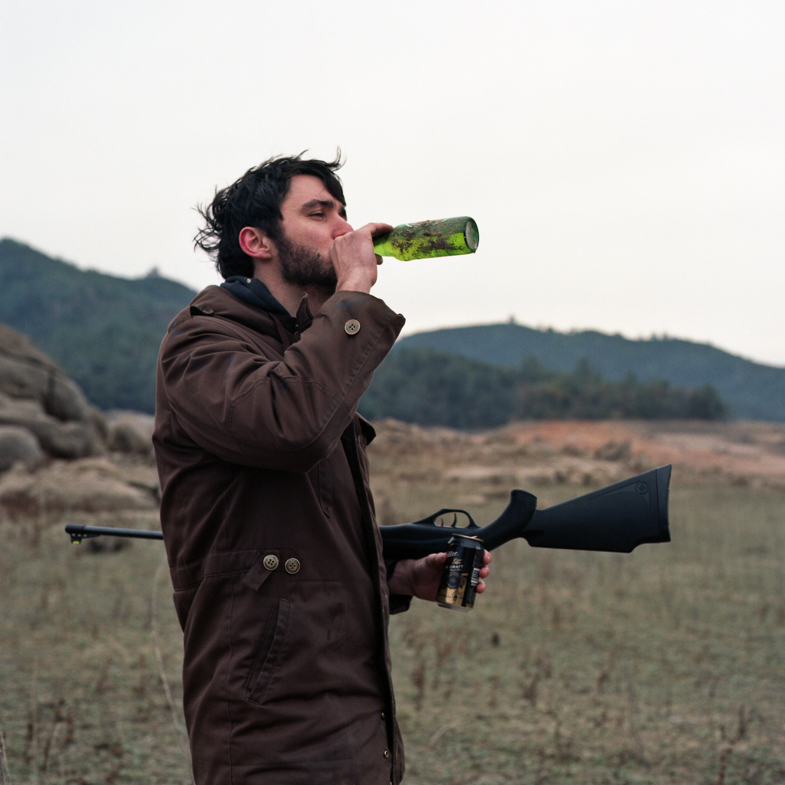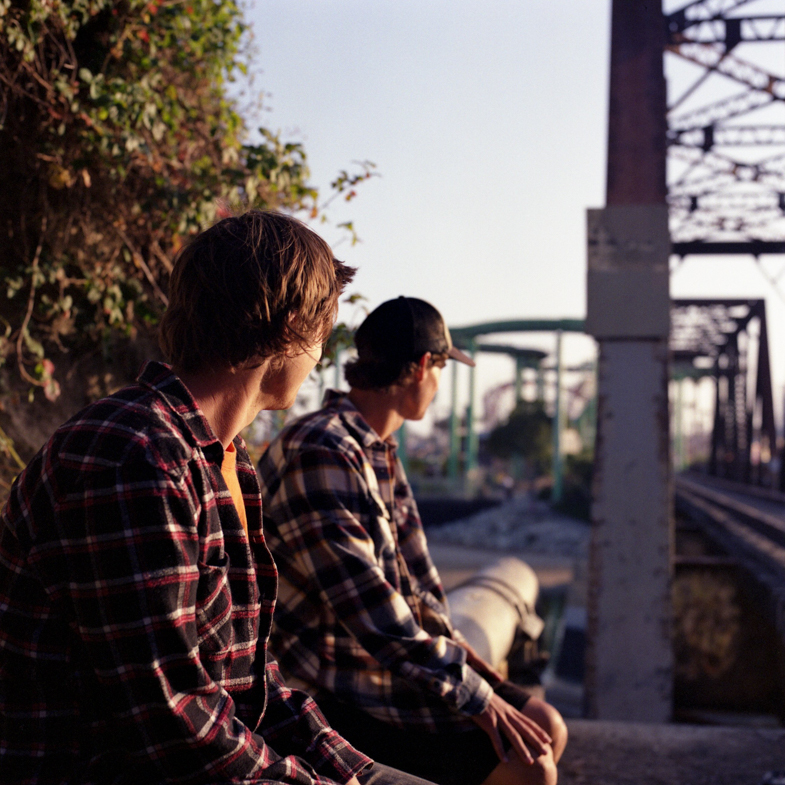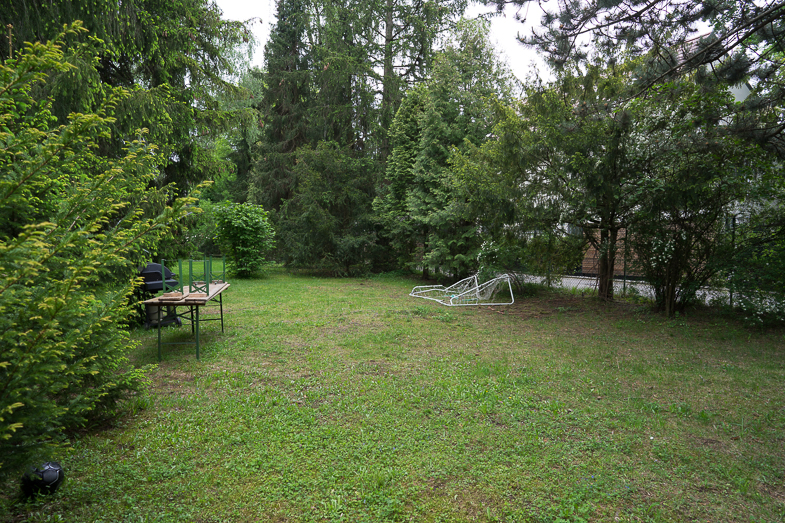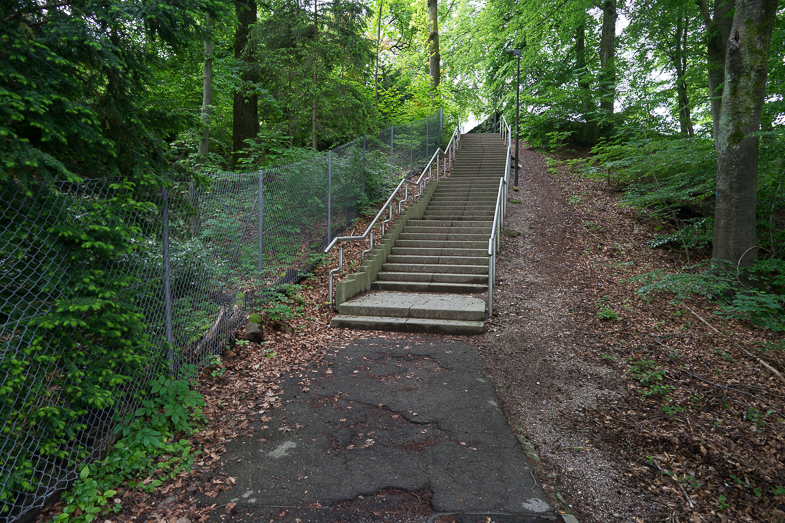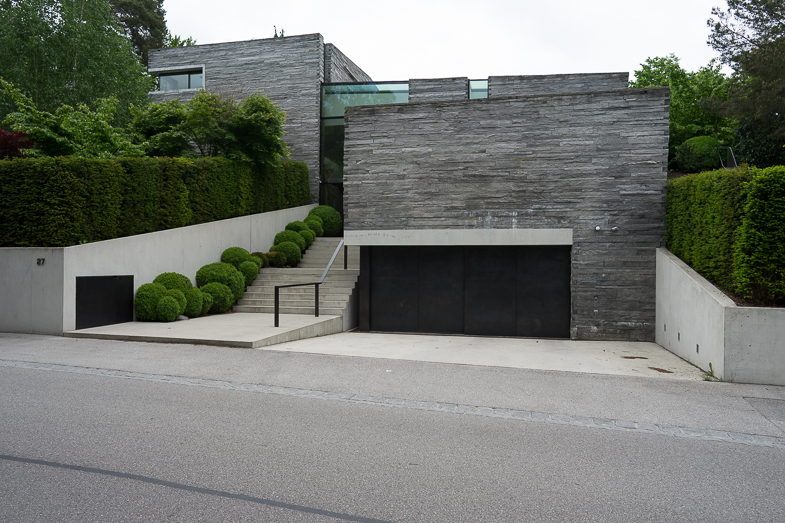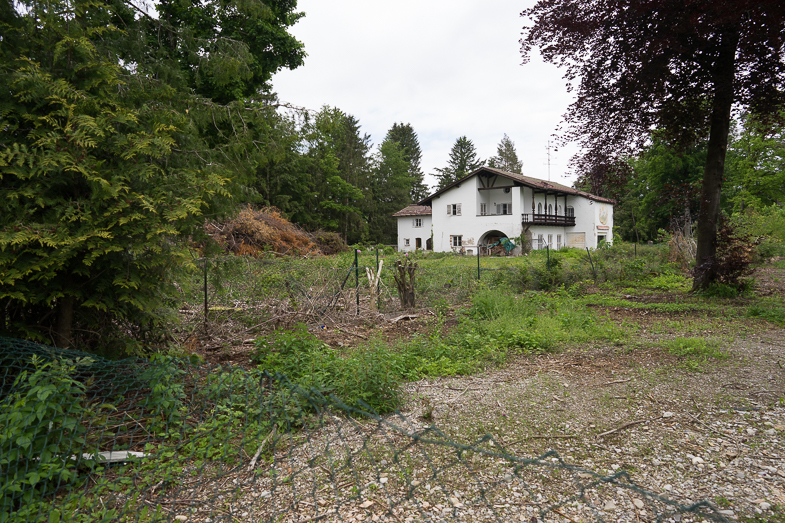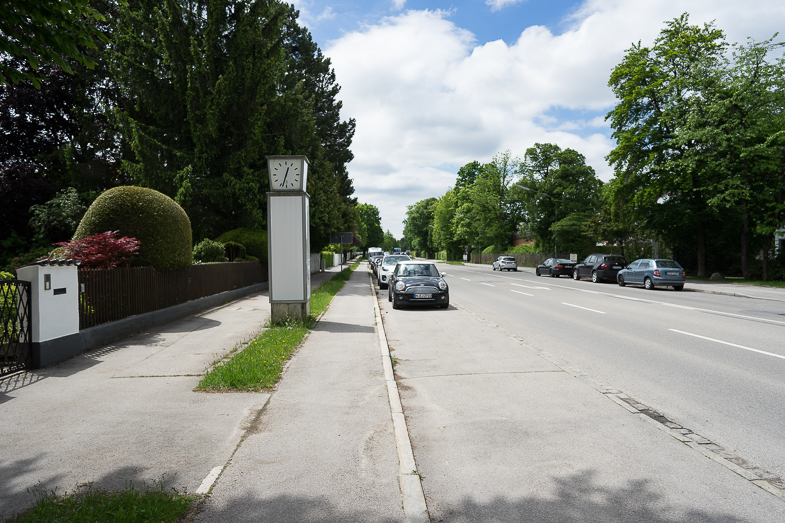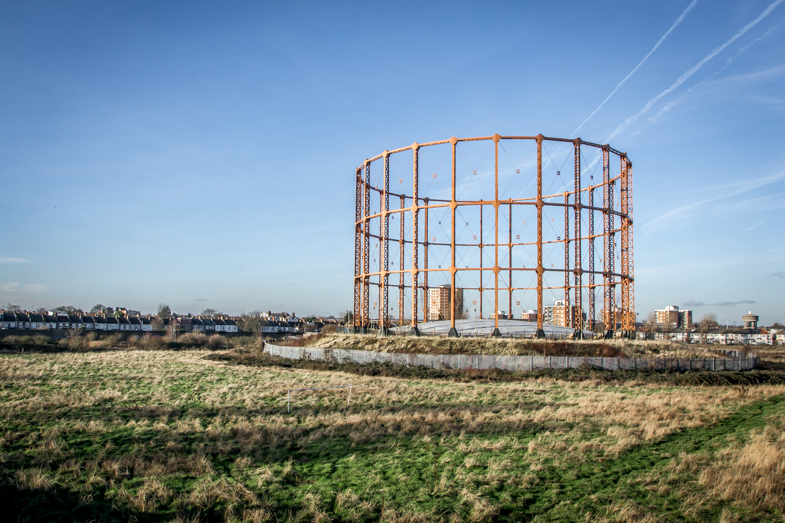
The urban conglomeration is of particular interest to me as a photographic subject. The intertwining of transport, utility, domestic, business and industrial infrastructure produces a rich, or sometimes bleak, visual environment. The remnants of earlier enterprise and now-redundant technology often remain in the urban environment, sometimes on a massive scale. This is the case with the gasometer, once ubiquitous in British cities.
The gasometer was a local gas storage device which consisted of a set of open-bottomed telescoping tanks sitting on a water seal and as gas flowed in from the gas works filling the tanks they would rise up guided by the surrounding frame. Many gasometers have been demolished since the creation of a national grid for gas storage and distribution, but some have stood firm to loom over the urban landscape.
The gas tanks no longer rise up inside the guiding structure, but stay submerged, invisible in the ground and empty of gas. These skeletons from a different era can be seen gathered in groups or alone on the metropolitan horizon. Or, viewed from between the buildings of a narrow street, reveal a segment of a silent sentinel towering over the homes, shops and pubs of the local community. I am happy that some of these are still a feature of the urban landscape.
— John Williams (aka Murray Maffra), The Hague, The Netherlands
